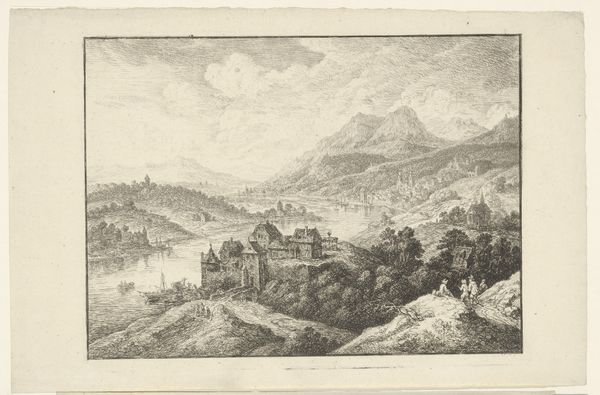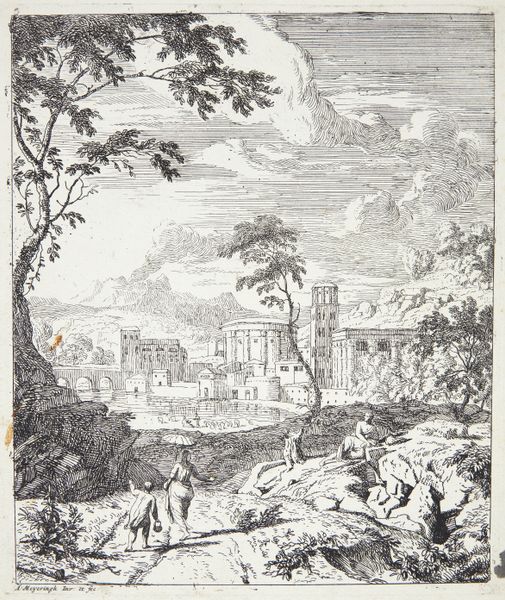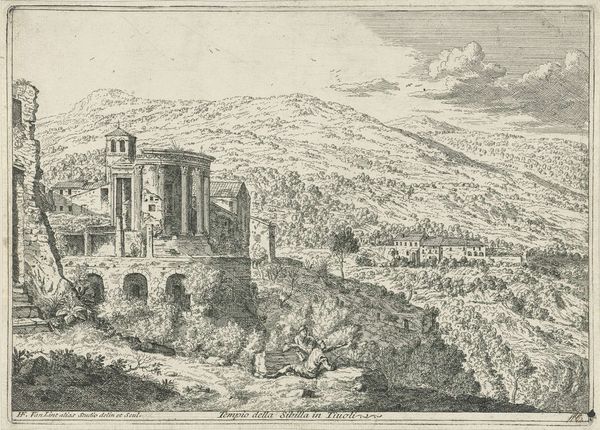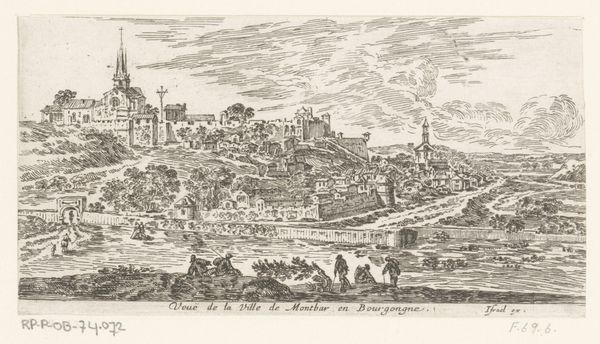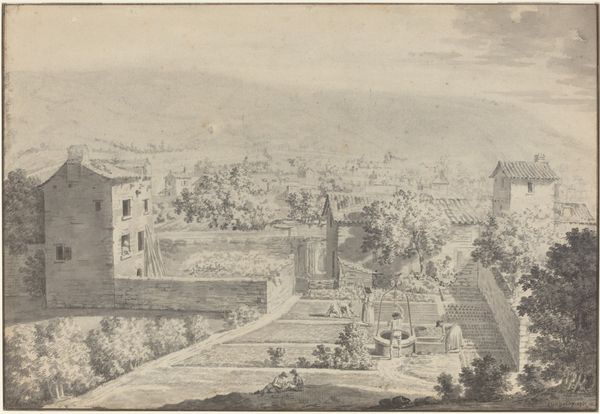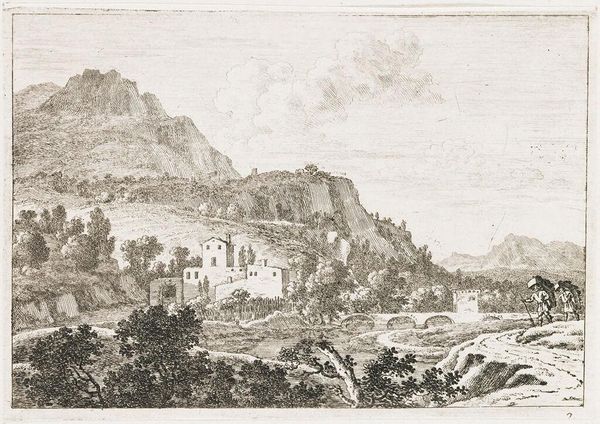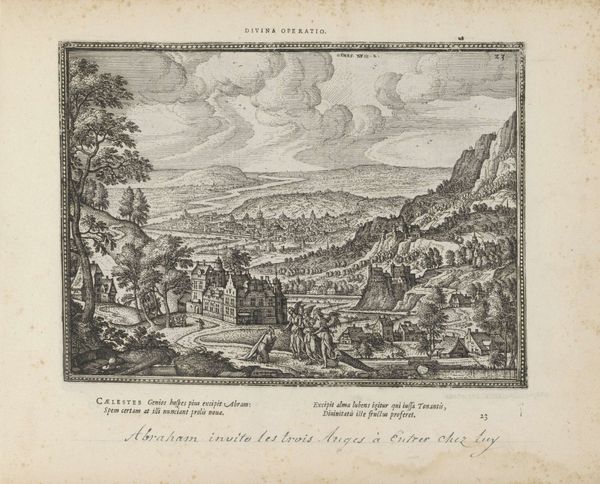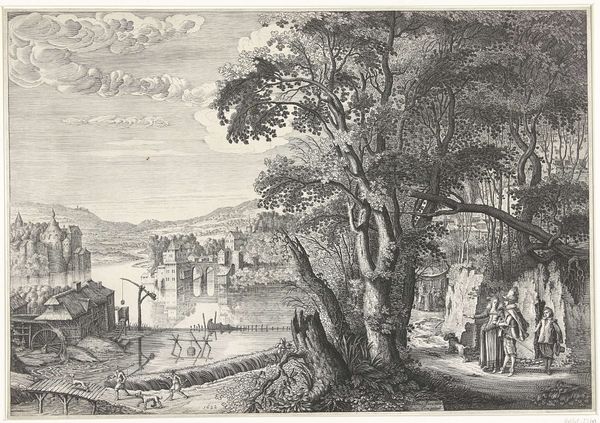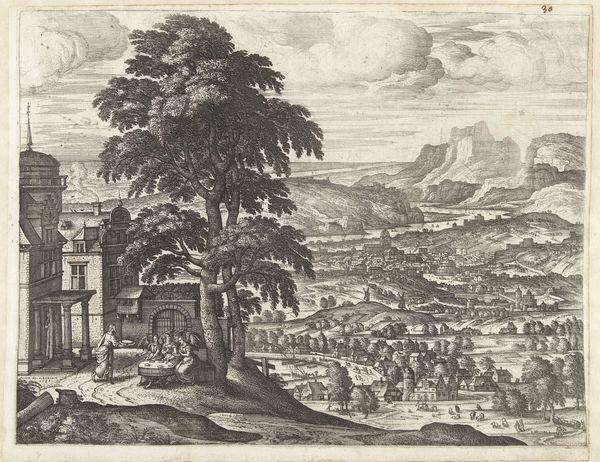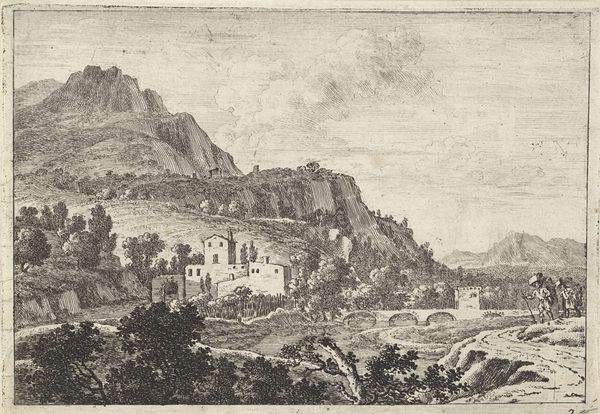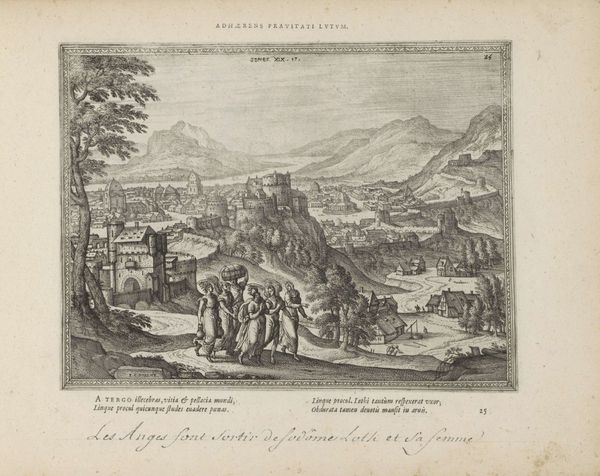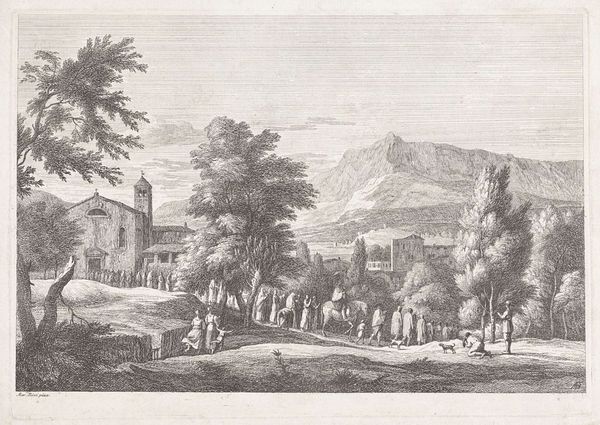
Dimensions: height 691 mm, width 446 mm
Copyright: Rijks Museum: Open Domain
Editor: Here we have Giuseppe Vasi’s "Panorama van de stad Rome," an engraving from 1765. It's quite striking – the detail is incredible for the medium. The sheer scale of the cityscape seems to dwarf everything. What strikes you about it? Curator: What I see is an assertion of power and permanence, communicated through the symbols of Rome itself. Consider how Vasi uses perspective; he’s elevated the viewer, granting them a kind of dominion over the scene. St. Peter's Basilica dominates, of course. What does its placement and size evoke for you? Editor: Well, its prominence definitely screams authority. I guess it's almost propaganda, showcasing the might of the Church? Curator: Indeed! It's about visual legacy and continuity. The Church positioned as the inheritor of Rome's imperial glory. But look beyond just the basilica itself, the composition balances classical structures with natural elements, reflecting a cultural dialogue. Can you see the ways nature is incorporated? Editor: The tree in the foreground is very prominent. It's almost as if the city emerges *from* nature, like it’s part of a larger organic system. Curator: Precisely! That merging emphasizes an unbroken connection to the past. Nature doesn’t diminish Rome’s achievements but rather contextualizes them as something enduring and fundamental, not merely built. Editor: So the print's power comes not just from its subject, but from how Vasi visually links history, nature, and faith to present Rome as this eternal, unshakable entity. Fascinating. Curator: Exactly! We can also see this power in similar architectural prints. It really highlights the ways symbols are intentionally deployed to build and maintain a cultural narrative.
Comments
No comments
Be the first to comment and join the conversation on the ultimate creative platform.

